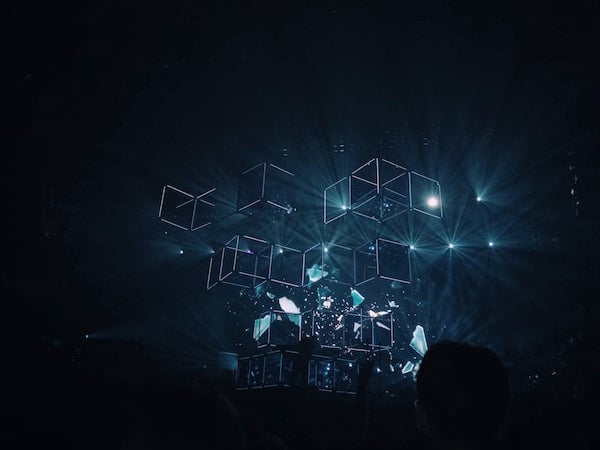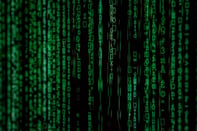Published on
Internet 3.0 for Academics: Building On BlockChain’s Potential

Imagine having the ability to gather digital material more accurately and efficiently based on its content for a course or scholarly paper. Or being able to verify your specific contribution to a massive dataset over time for a tenure and promotion review. Perhaps you want to know exactly how much each student in your class has contributed to the team working on an assignment. Or strengthen protections against plagiarism or theft of intellectual property or other work you or your colleagues created. Even improve how open educational resources are created, used, and managed.
Emerging technologies based on distributed and decentralized networks are turning each of these from desires to reality (Faife 2018). The internet’s structure today consists of large, physical servers managed by a few very large companies that host the pieces of what we think of as the internet (i.e. email, websites, social media, etc.). This creates some key vulnerabilities such as server failure, broken URL links and hacking. In contrast, decentralized networks consist of peer-to-peer networks built on a community of users. In a decentralized environment, any given website would be distributed across hundreds of devices, protecting it from current vulnerabilities such as a critical server going down in a denial of service attack. This makes decentralized networks ideal for academic endeavors.
The best-known decentralized network is blockchain, the underlying architecture for cryptocurrency (e.g., Bitcoin). In brief, blockchain is a decentralized ledger that provides a permanent record of transactions (in the case of Bitcoin, financial transactions). In a distributed ledger, these transactions (e.g., medical information following a specific test, an academic credential, a new set of data from a research participant, etc.) are sent to the network of computers for verification based on a set of rules established by users who share a common interest in tracking a specific set of information. Common interests could be financial, medical or research data. Once verified, the transactions are put into “blocks” that are then linked (“chained”) together. Each transaction block is assigned a unique tag called a “hash” that provides the connections among the blocks in a specific sequence that cannot be changed. In fact, any change — no matter how small — changes the hash and indicates data tampering or legitimate change. All of this is encrypted, transactions are transparent, and the blockchain does not exist on only one “server,” making blockchains extremely difficult to hack. One person would need to control at least 51% of the total chain in order to be successful.
In postsecondary education, decentralized networks (mainly built on blockchains) are being used mostly to create and manage credentials students earn, such as degrees, certificates and badges (Grech and Camilleri 2017; Pelletier 2018). BlockCerts, an open source platform developed by the MIT Media Lab and Learning Machine, is one example. Related uses of blockchain based platforms include admissions (Layne 2019), tracking institutional and specialized accreditation certification, and academic credit transfer.
Granting, verifying and tracking learners’ certifications and academic credit, while managing various forms of accreditation are very important and useful. However, the potential for decentralized networks in postsecondary education settings is much broader. These include; managing intellectual property, publishing, teaching, research and data repositories, as well as student and faculty portfolios, to name a few.
Managing intellectual property is a complex and costly endeavor. A decentralized network approach would create a time stamped announcement (disclosure) of research data, a written document, creative output, or other material that would provide a verifiable record that can be tracked through various protection procedures (patent, copyright, etc.). The provenance of the work would be clearly established, an important advancement in fields such as digital art (Zeilinger 2018). Licensing and permission rights could also be easily recorded and tracked. Smart contracts could be created to manage license fees and royalty payments. A possible advantage here would be the opportunity for the creator(s) of the work to manage availability and use directly, with no need to go through an intermediary, to whom ownership of the work is often transferred in exchange for such management.
Scientific publishing using decentralized networks has seen a few startups, such as Orvium and Project Aiur. Whether decentralized networks will supplant the traditional large publishers is a topic of some debate (Kafka 2018). The decentralized network model has the potential for opening additional opportunities for collaboration and discussion of research and scholarship, as well as providing verifiable records of such activity both for the overall record as well as the commentator’s portfolio. A potential vulnerability here is that umbrella groups can have great intentions, but be acquired by entities that do not. Provided that the benefits of decentralized networks are truly the basis for publishing applications, the sharing, collaboration and transparency aspects could be strong net positives.
The potential benefits of decentralized networks for teaching are truly exciting. As the use of open educational resources (OER) become more widespread, the ability to merge the creation and use of content, as well as eliminate many of the issues around licensing, open up new opportunities for Content Addressable Resources for Education (CARE) (Downes 2019). Decentralized networks such as the Interplanetary File System organizes material not on individual URLs, but rather on its content using content-based addressing (Benet 2014) that is spread across the network. Content-based addressing allows the user to ask whether anyone in the network has content on a specific topic. It also opens the opportunity to create mini networks of interested users (such as a class) that shares any content members have discovered. Such an approach would revolutionize opportunities for OER based instruction. It also fosters collaboration on platforms such as GitHub, allowing users to access, clone, own a copy and edit materials, all of which are documented. The Creative Commons open educational strategies, providing a way to handle licensing and sharing/remixing of material as well.
Likewise, research teams would be able to create time stamped data repositories for later analyses, while students and faculty could create individualized portfolios with work products that could subsequently be submitted for review and evaluation.
Decentralized networks hold much promise. They also present challenges. Many have noted that the original blockchain decentralized networks require enormous amounts of energy to operate. If they’re not generated through renewable sources they create a large carbon footprint. An increasingly common approach to this is the move to store only the identifying hash in the decentralized network, which then points to a repository of the actual material off the network. Although this reduces the footprint, it introduces vulnerability in terms of ownership of the off-network repository that will need to be monitored but is manageable.
Opening new forms of collaboration in teaching and research/scholarship/creative activities is truly exciting. Decentralized networks (appropriately created) can open ways of learning and discovering that are far more intentional, immersive and innovative, honoring the need for archiving all of this work. Let us explore it boldly.
– – – –
References
Benet, Juan. 2014. “IPFS—Content Addressed, Versioned, P2P File System (Draft 3).” Published June 14, 2014. https://arxiv.org/pdf/1407.3561.pdf.
Downes, Stephen. 2019. “A Look at the Future of Open Educational Resources.” The International Journal of Open Educational Resources, 1, no. 2 (Spring/Summer). https://www.ijoer.org/wp-content/uploads/2019/06/IJOER-Spring-2019-A-Look-at-the-Future-final-06232019.pdf.
Faife, Corin. 2018. “The Decentralized Web Explained (in Words You Can Understand).” Published November 27, 2018. https://breakermag.com/the-decentralized-web-explained-in-words-you-can-understand/.
Grech, Alexander, and Anthony F. Camilleri. 2017. “Blockchain in Education.” JPR Science for Policy Report. Published 2017. http://publications.jrc.ec.europa.eu/repository/bitstream/JRC108255/jrc108255_blockchain_in_education(1).pdf.
Kafka, Alexander C. 2018. “Will Blockchain Revolutionize Scholarly Journal Publishing?” The Chronicle of Higher Education, November 13, 2018. https://www.chronicle.com/article/Will-Blockchain-Revolutionize/245073.
Layne, Melissa. 2019. “Higher Education and the Blockchain Ecosystem: Using Blockchain in Admissions.” The Evolllution, July 8, 2018. https://evolllution.com/technology/tech-tools-and-resources/higher-education-and-the-blockchain-ecosystem-using-blockchain-in-admissions/.
Pelletier, Stephen. 2018. “Blockchain in Higher Education.” Published 2018. https://www.vaughn.edu/wp-content/uploads/2018/12/Blockchain_Oracle_Explainer_In_Higher_Education.pdf.
Zeilinger, Martin. 2018. “Digital Art as ‘Monetised Graphics’: Enforcing Intellectual Property on the Blockchain. Philosophy & Technology 31, no. 1: 15-31. https://doi.org/10.1007/s13347-016-0243-1.
Author Perspective: Administrator



